 W
WThe Spirit Soldier rebellions of 1920–1926 were a series of major peasant uprisings against state authorities and warlords in the Republic of China's provinces of Hubei and Sichuan during the Warlord Era. Following years of brutal suppression, civil war, and excessive taxation, the rural population of central China was restive, and susceptible to militant salvationist movements. One spiritual group, the so-called Spirit Soldiers, promised the peasants that they could gain protection from modern weaponry through protective magic. Tens of thousands consequently rallied to join the Spirit Soldiers, and successfully revolted in the mountainous and isolated areas of Hubei and Sichuan. At its height, the Spirit Soldier movement numbered over 100,000 fighters, and controlled about forty counties.
 W
WThe 1959 Tibetan uprising or the 1959 Tibetan rebellion began on 10 March 1959, when a revolt erupted in Lhasa, the capital of Tibet, which had been under the effective control of the People's Republic of China since the Seventeen Point Agreement was reached in 1951. Armed conflict between Tibetan guerillas and the People's Liberation Army (PLA) had started in 1956 in the Kham and Amdo regions, which had been subjected to socialist reform. The guerrilla warfare later spread to other areas of Tibet and lasted through 1962. Some regard the Xunhua Incident in 1958 as a precursor of the Tibetan uprising.
 W
WThe An Lushan Rebellion was an armed conflict between the Tang dynasty of China and various regional powers. The rebellion's overt phase began on 16 December 755, when general An Lushan mobilized his army and marched to Fanyang, and ended when his Yan dynasty fell on 17 February 763. This event is also known as the An–Shi Rebellion or An–Shi Disturbances, as it continued after An Lushan's death under his son An Qingxu and his deputy and successor Shi Siming, or as the Tianbao Rebellion (天寶之乱), as it began in the 14th year of that era. The rebellion spanned the reigns of three Tang emperors against the rival Yan Dynasty before it was finally quashed. Besides the Tang dynasty loyalists, others involved were anti-Tang forces, especially those in An Lushan's base area in Hebei and Sogdian forces or influences, among others. The rebellion and subsequent disorder resulted in a huge loss of life and large-scale destruction. It significantly weakened the Tang dynasty and led to the loss of the Western Regions. The Tang dynasty hired 4,000 mercenaries from Abbasid territories and the Uyghur Khaganate intervened for the Tang dynasty against An Lushan.
 W
WThe East Turkestan independence movement, also known as the Xinjiang independence movement or the Uyghur independence movement, is a political movement that seeks independence for Xinjiang Uyghur Autonomous Region, a large and sparsely-populated province-level subdivision of the People's Republic of China (PRC/China) located in the country's northwest, as a homeland for the Uyghur people, who are primarily of Turkic rather than Sinitic ethnic extraction. Within the movement, there is widespread support for the region to be renamed, since "Xinjiang" is seen by independence activists as a colonial name. "East Turkestan" is the most well-known proposed name. "Uyghurstan" is another well-known proposed name.
 W
WGuanqiu Jian and Wen Qin's Rebellion, or the Second Rebellion in Shouchun, was a punitive uprising led by Guanqiu Jian and Wen Qin, two generals from the state of Cao Wei, against the regent Sima Shi and his clan. This was the second of a series of three rebellions that all took place in Shouchun in the 250s during the Three Kingdoms period in Chinese history.
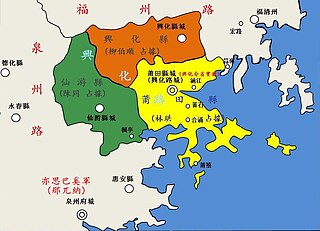 W
WThe Ispah rebellion was a series of civil wars in the middle of 14th century in Fujian during the Yuan dynasty. The term Ispah might derive from the Persian word "سپاه" (sepâh), meaning "army" or "Sepoy". Thus, the rebellion is also known as the Persian Sepoy rebellion in Chinese documents.
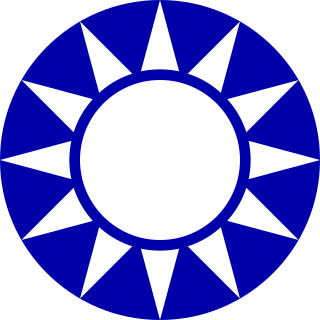 W
WThe Kuomintang Islamic insurgency refers to a continuation of the Chinese Civil War by Chinese Muslim nationalist Kuomintang Republic of China Army forces in Northwest China, in the provinces of Gansu, Qinghai, Ningxia, and Xinjiang, and another insurgency in Yunnan.
 W
WThe late Ming peasant rebellions (明末民變) were a series of peasant revolts during the last decades of the Ming dynasty lasting from 1628–1644. They were caused by natural disasters in Shaanxi, Shanxi, and Henan. At the same time, the She-An Rebellion and Jurchen invasions forced the Ming government to cut funding for the postal service, which resulted in the mass unemployment of men in the provinces hit hard by natural disasters. Unable to cope with three major crises at the same time, the Ming dynasty collapsed in 1644.
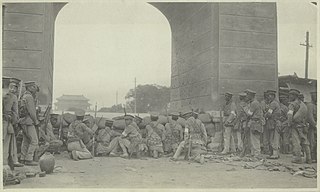 W
WThe Manchu Restoration of July 1917 was an attempt to restore the monarchy in China by General Zhang Xun, whose army seized Beijing and briefly reinstalled the last emperor of the Qing dynasty, Puyi, to the throne. The restoration lasted only a few days, from July 1 to 12, and was quickly reversed by Republican troops. Despite the uprising's popular name, almost all reactionary putschists were ethnic Han Chinese.
 W
WThe Ngolok rebellions (1917–1949) were a series of military campaigns against unconquered Ngolok (Golok) tribal Tibetan areas of Qinghai (Amdo), undertaken by two Hui commanders, Gen. Ma Qi and Gen. Ma Bufang, on behalf of the Beiyang and Kuomintang governments of the Republic of China. The campaigns lasted between 1917 and 1949.
 W
WProtests and uprisings in Tibet against the government of the People's Republic of China have occurred since 1950, and include the 1959 uprising, the 2008 uprising, and the subsequent self-immolation protests.
 W
WThe Rebellion of the Three Guards, or less commonly the Wu Geng Rebellion, was a civil war, instigated by an alliance of discontent Zhou princes, Shang loyalists, vassal states and non-Chinese peoples against the Zhou government under the Duke of Zhou's regency in the latter 11th century BC.
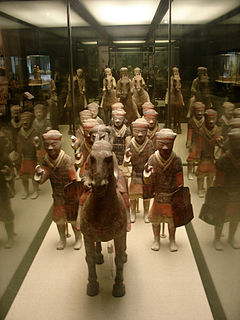 W
WThe Red Eyebrows was one of the two major agrarian rebellion movements against Wang Mang's short-lived Xin dynasty, the other being Lülin. It was so named because the rebels painted their eyebrows red.
 W
WIn September 2009, Ürümqi, the capital of the Xinjiang Uyghur Autonomous Region in the People's Republic of China, experienced a period of unrest in the aftermath of the July 2009 Ürümqi riots. Late August and early September saw a series of syringe attacks on civilians. In response to the attacks, thousands of residents held protests for several days, resulting in the deaths of five people. In addition, the arrest and beating of several Hong Kong journalists during the protests attracted international attention.
 W
WThe Tang campaigns against Karasahr were two military campaigns sent by Emperor Taizong of the Tang dynasty against the Tarim Basin kingdom of Karasahr, a vassal of the Western Turkic Khaganate. The city-state, which later became part of Xinjiang), may have been known to its inhabitants by the Tocharian name Agni, which was rendered Yanqi in Chinese sources. The first campaign in 644 was led by the Tang commander Guo Xiaoke, protector-general of the Anxi Protectorate in western China, who defeated the oasis state and a Western Turkic army and installed a Tang loyalist as ruler. The second campaign in 648, which was part of the campaign against Karasahr's neighboring state of Kucha, was led by a Turkic general of the Tang Dynasty, Ashina She'er, who defeated and conquered Karasahr.
 W
WThe March 2008 Tibetan unrest was a series of protests and demonstrations against the Chinese government's persecution of Tibetans. The scheduled 2008 Olympic Games in Beijing was a rallying point before 2008, and protests in the Tibetan capital of Lhasa by monks on 10 March is credited with beginning the movement. Numerous peaceful protests and demonstrations were held to commemorate the 49th anniversary of the 1959 Tibetan Uprising Day, when the 14th Dalai Lama escaped from Tibet. The demonstrations in Lhasa by monks, nuns and non-monastic Tibetans were met on 14 March, Buddha Day, and afterwards with electric prods, tear gas canisters, and indiscriminate shootings, according to a report by Human Rights Watch on the excessive use of force by Chinese forces. The protests and demonstrations spread spontaneously to a number of monasteries and through the Tibetan plateau, including into counties located outside the designated Tibet Autonomous Region. The Chinese police and military units' excessive use force likewise spread, and the arrest of monks at Labrang Monastery caused more clashes. International protests of support were also held in major cities, and at Olympic events.
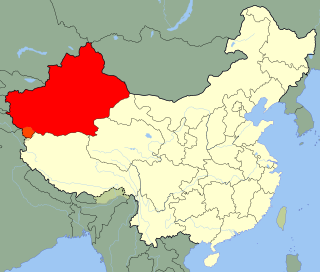 W
WThe 2008 Uyghur unrest is a loose name for incidents of communal violence by Uyghur people in Hotan and Qaraqash county of Western China, with incidents in March, April, and August 2008. The protests were spurred by the death in police custody of Mutallip Hajim.
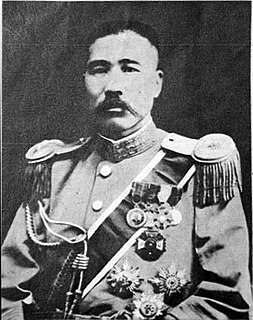 W
WThe Warlord Rebellion in northeastern Shandong was an uprising of several allied Chinese warlord armies under the leadership of Zhang Zongchang in 1929. The rebels wanted to regain their former territories in Shandong from Liu Zhennian, the man who had defected from Zhang to the Nationalist government in Nanjing during the Northern Expedition. After some initial successes, the rebels were defeated due to the indiscipline of their forces. In the end, the uprising failed to topple Liu Zhennian's rule over eastern Shandong, but resulted in high civilian casualties and widespread destruction at the hands of both sides in the conflict.
 W
WThe Xunhua Incident was an uprising of Tibetan and Salar people against the rule of Communist Party of China (CPC) in Qinghai, China in April, 1958. The incident took place in Xunhua Salar Autonomous County of Qinghai Province, the hometown of 10th Panchen Lama, amid the Great Leap Forward. Since March 1958, local officials imposed strict rules for socialist transformations and, in order to prevent uprising, religious leaders including Jnana Pal Rinpoche (加乃化仁波切), a well-respected monk, were forcibly sent for re-education. Over 4,000 people with different ethnic backgrounds subsequently revolted and killed a team leader from the CPC task force. The incident ended in suppression and a massacre by the People's Liberation Army, which killed 435 people within four hours on April 25, most of whom were unarmed civilians.